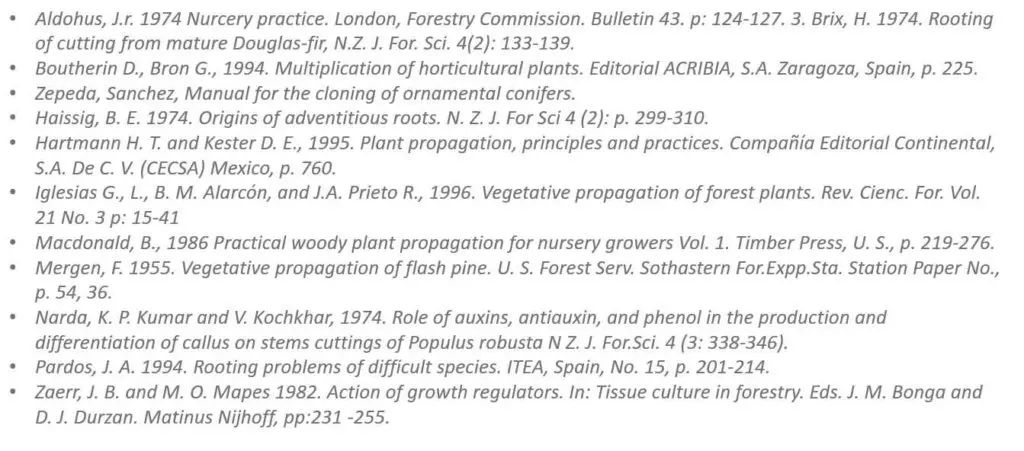This type of cypress is decorative and brings a perfect scent to any space. The best part is Lemon Cypress trees can be grown both indoors and outdoors. Find out how to grow, propagate and care for Lemon Cypress tree, as well as its most common diseases, and how to get it to grow strong and lush. Learn all about lemon cypress tree care in this 2023 guide recently updated with comments and questions from our readers.
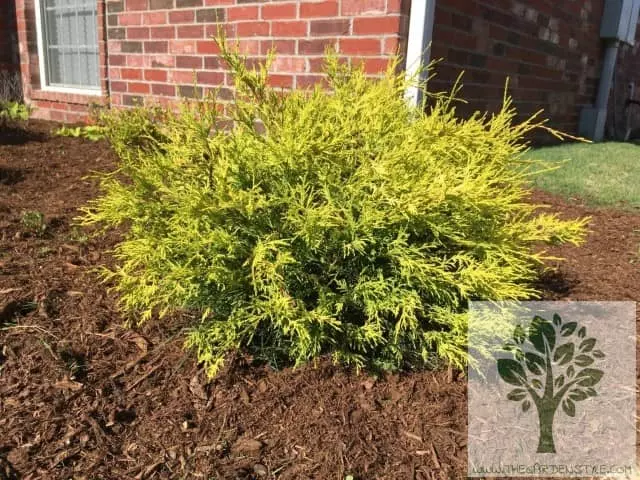
Fake Lemon Cypress in our house.
Table of Contents
Characteristics of Lemon Cypress Tree
The Lemon Cypress tree (Cupressus macrocarpa) is also known as Monterey cypress, Goldcrest cypress, lemon cypress Grinch tree, lemon cedar, or lemon pine. It is a tree that belongs to the group of evergreen conifers and comes from southern California, more specifically from Monterey Bay -hence its name-.
The most striking thing about this subspecies of cypress is that it has a strong lemon scent, perceptible when its leaves are rubbed. It is also characteristic of its pyramidal shape and yellowish-green scaly leaves. Its leaves are perennial and its fruits are similar to a pineapple. Lemon Cypress growth rate is about an annual growth of 5 feet (1.5 m).
The best thing about the Lemon Cypress Tree is that it can be kept both indoors and outdoors, as it adapts quite well to different climates. However, it will thrive best in climates with average temperatures and growing outdoors, where it is neither too hot nor too cold. It is widely used for ornamental purposes
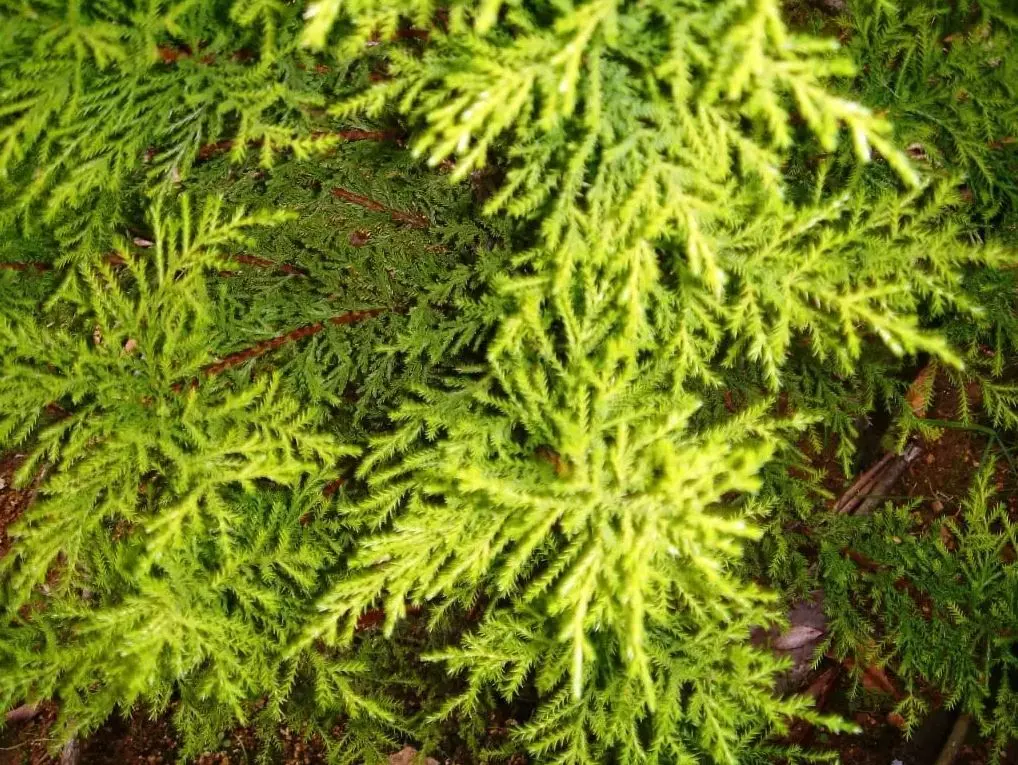
Lemon Cypress Tree Care
In the following paragraphs, you will find tips about Lemon Cypress Care.
Lemon Cypress Care: Soil
Lemon Cypress Care: Soil. To develop properly, the Lemon Cypress tree needs well-drained soil, so it may be advisable to mix the substrate with sand to prevent water stagnation.
Additionally, we could add small stones to improve drainage. Good soil is essential for the proper care of the lemon cypress tree.
Lemon Cypress Tree Location
Although it adapts well to any climate, the idea is to keep it between 50 and 80 °F (10 and 27 ºC). If temperatures drop more or there is frost, it is advisable to protect the cypress or shelter it if it is in a pot.
Potted Cypress Tree Care
For potted Lemon Cypress tree care, ideally mix mulch, perlite, and clay in equal parts. We can keep the lemon cypress outdoors in a pot as long as the temperatures are adequate as mentioned above.
Watering Lemon Cypress Tree
Lemon Cypress Care: Adequate Watering. Many people wonder how often to water lemon cypress, and the answer is the following. You should water the lemon cypress about 2 to 3 times a week during the summer. For the rest of the year, it will be once a week. It is important that we respect the watering for the correct lemon cypress tree care.
Fertilization Lemon Cypress
Lemon Cypress Care: Fertilization. Apply fertilizer for acidophilic plants periodically and according to the manufacturer’s instructions. Keep in mind checking the soil pH at least once a year when you have a potted Lemon Cypress tree.
It is common to see potted lemon cypress trees starting to show deterioration, get sick or not grow well after some time in pots and it is because the pH of the soil is not adequate. This pH may not be adequate because of the risk of water having too much lime and the soil ends up being too alkaline or because the soil is excessively acidic, for example by adding too much fertilizer for acidic soils.
I would strongly recommend measuring the pH of the soil, especially if it is a potted lemon cypress and adjusting the pH to the proper range. To adjust the soil pH use acidifiers or de-acidifiers (meaning alkalinize additive).
- Kindly NOTE: This soil tester can not be applied to test pH value of any other liquid. If the soil is too dry the indicator will not move, and water it before testing.
- 3 METERS IN ONE: Soil moisture level, Soil pH value and Sunlight level could be tested easily according to your need by switching the function button of this soil meter.
- NO BATTERY NEEDED: Simply insert the meter into soil, wait few minutes, accurate test results will be displayed on the readout panel. No battery is needed.
- Organic granular for increasing soils alkalinity, pH; Low pH can cause poor fertilizer response and soil structure
- Most plants grow well in a pH between 6 and 7, with 6.5-6.8 being ideal; below 6.0 Many nutrients cannot be absorbed
- Adding garden lime will increase the pH and make those nutrients available again; test soil pH before applying
Continue reading about Lemon Cypress Care and Lemon Cypress Propagation.
Lemon Cypress Propagation
Propagation of Lemon cypress tree is carried out by seeds in the spring. We must be sure to get quality lemon cypress seeds. Lemon cypress can also be propagated by cuttings, this being the recommended method. Read on to get to the section where we will explain step by step how to propagate Lemon Cypress from cuttings.
Pruning Lemon Cypress
The Lemon Cypress Grinch Tree can grow up to 10 ft (3 m) in a pot if it is not trimmed. To maintain its ornamental shape, the branches that protrude must be trimmed. For it to grow healthy, dry and/or diseased branches must be removed. Pruning is very important for the correct care of the lemon cypress tree.
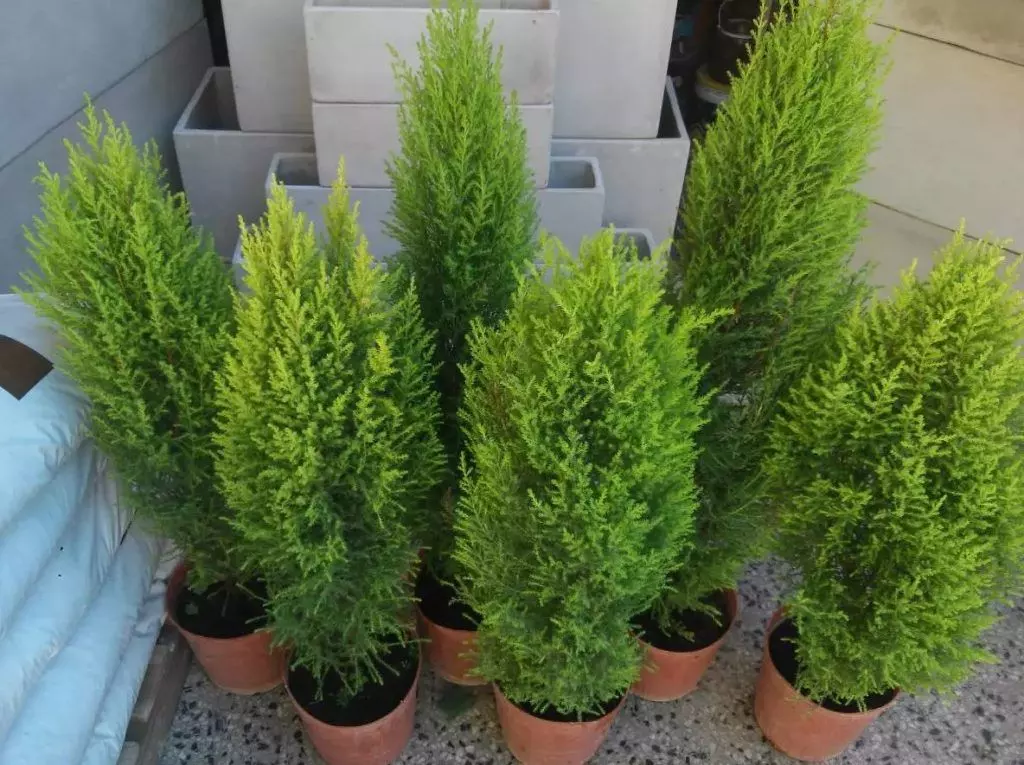
Diseases and Pests Lemon Cypress Tree
Although Lemon cypress is a very resistant plant, it can be affected by certain pests and fungi:
Aphid: to solve the attack of this pest it is advisable to spray with insecticides, especially in spring. If the lemon cypress is attacked by this pest, it may not recover afterward.
Phytophthora: this fungus appears when the lemon cypress has excess water. It attacks the root and covers the stem with thick algae, so it is very important to water it sparingly.
Seiridium: this fungus affects the cypress by pruning cuts (which usually happens if pruning tools are not properly disinfected), small cracks, or insect bites. You will see that your cypress has been affected by this fungus if the bark starts to turn reddish-brown, cracks, and releases resin. If the plant is affected, prune the attacked parts and apply a fungicide.
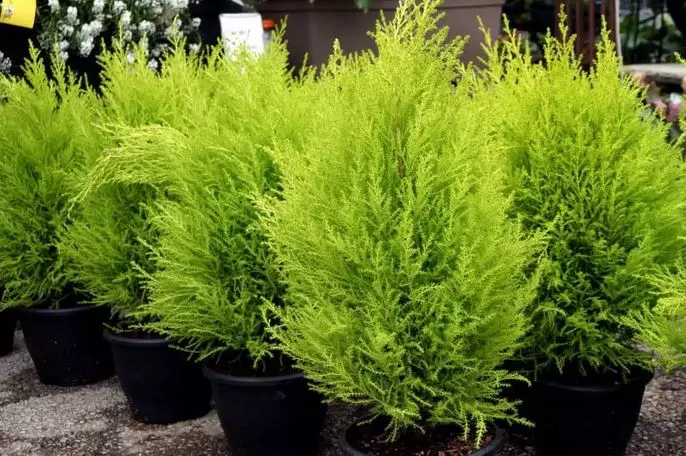
What is a Lemon Cypress Tree
The Lemon Cypress (Cupressus macrocarpa var. goldcrest) is an ornamental coniferous tree of Californian origin, characterized by its yellowish foliage.
- Direct from farm: delivered direct from our greenhouse, where our plants are grown year round under ideal conditions for maximum quality.
- The lemon cypress tree, is a variety of Monterey cypress. It gets its common name from the powerful strong lemon scent that its branches exude if you brush against them or crush their foliage.
- The lemon cypress thrives in grow zones 7-10. It requires well draining soil, and a nice full sun location.
How to Propagate a Lemon Cypress Tree
When looking to propagate an ornamental conifer such as lemon cypress it is important to understand how to propagate a lemon cypress tree, and why the best option is to propagate a lemon cypress from cuttings, and when to propagate a lemon cypress tree. Overall, it is important to understand the lemon cypress tree care, avoid diseases and prevent your lemon cypress from turning brown.
In the following paragraphs learn about the propagation of Lemon Cypress trees and other similar conifer species, as well as the propagation of trees in general.
Trees are multicellular organisms that generally possess sexual cells (male and female gametes) as well as asexual cells known as vegetative cells.
The most commonly used strategy for propagating lemon cypress and other conifers is the use of vegetative cells. These vegetative cells make up the tissues and organs of the plants and have the ability to be totipotent. That is to say, they possess all the information to self-reproduce and generate a completely new plant. It is thus more effective than seed propagation, which in principle depends on seed germination and this process is not 100% effective.
The other advantage of vegetative cell reproduction is that the new plants are identical to the plants that gave rise to them. As vegetative cells divide mitotically, they keep their genetic information constant. This duplication is called cloning and the descendant plant populations are called clones (Hartmann and Kester 1995).
Cloning is achieved through asexual (also called vegetative) reproduction by using parts or fragments of one plant to form others identical to the parent plant (or parental material). These fragments can be cuttings, or cuttings (smaller cuttings), bulbs, tubers, rhizomes, stem pieces, leaves, or parts of leaves. These organs or plant fragments are often called cuttings (Boutherin and Bron, 1994).
Many of the world’s major cultivated plant varieties have since ancient times been cloned from cuttings to perpetuate their attributes (grapevine, banana, olive, fig, potato, garlic, onion, pineapple, and many valuable ornamental plants such as bamboo, rose varieties, orchids, and even large trees).
Propagation of Lemon Cypress trees and other conifers by cuttings is thus of enormous importance in maintaining plants identical to their parents and achieving a high rate of reproductive success.
Adventitious roots can be formed in two ways:
1 – through preformed roots, which develop naturally on stems or branches when they are still attached to the parent plant but do not emerge until after the stem portion is cut (Boutherin and Bron, 2005).
2 – The other is from lesion roots which form after the cuttings have been made. When the cuttings are cut, the cells are exposed and consequently enter a healing process; the dead cells form a necrotic plaque that seals the wound with subereous material and covers the xylem with gum, thus preventing desiccation. The cells inside multiply to form a parenchyma layer (callus) (Haissig, 1974).
It has long been known that callus formation in plants can be promoted by the application of rooting-promoting substances such as indole butyric acid and naphthaleneacetic acid (Narda et al., 1974), nowadays known commercially as growth hormones or rooting hormones.
How to Propagate Lemon Cypress from Cuttings
How to Propagate Lemon Cypress from Cuttings. We will now review how to propagate Lemon Cypress and in particular the genus Cupressus.
Although we have consulted scientific material to understand and test the best options, there are not many scientific studies on how to improve the propagation of this conifer.
In practice, vegetative propagation of this genus is commonly used, although with very low percentages of root formation.
How to Propagate Lemon Cypress: Selection of Cuttings
The selection of cuttings is key for successful propagation and to understanding the Lemon Cypress tree care.
First and foremost, you should have cuttings taken from young plants. Young plants root more easily than adult plants of the same species (Iglesias et al., 1995). Mature tissues take longer to root and develop fewer roots than juvenile tissues.
All cutting should be done in an aseptic manner, cleaning and disinfecting the elements with 70% isopropyl alcohol, and leaving them in contact for a few minutes.
In some tree species, after felling, adventitious shoots emerge. These juvenile shoots emit stems that can be used as cuttings and which will easily root.
The degree of development and the physiological condition of the cuttings are determining factors for rooting. It is advisable to take the cuttings early in the morning when the plant material is turgid.
Firmer stems, (those that break before bending), have a higher carbohydrate content, which will allow a greater number of roots to take root. Soft, flexible stems will tend to be less likely to root. Basal branches tend to have relatively low nitrogen levels and high carbohydrate levels. These are the most desirable.
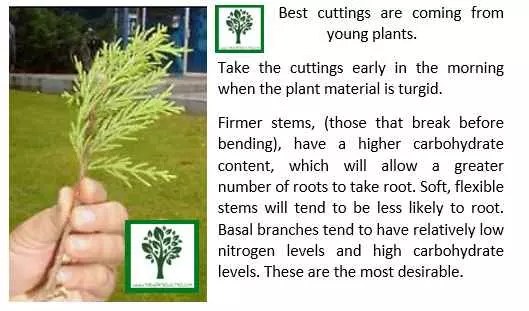
When to Propagate Lemon Cypress Tree
When to Propagate Lemon Cypress Tree. The time of year for cutting collection influences rooting because the physiological conditions of the plants vary during the year. In cool temperate regions, the time of cutting that gives the best results is between December and February when the plants have little metabolic activity as they are dormant (after the appearance of vegetative buds).
Lemon Cypress can be propagated at other times of the year, although autumn to late winter, during the dormant period, are the most advisable times.
According to Pardos (1994), in conifers and some angiosperms, late winter and early spring, when there is active root growth under natural conditions, marks a maximum in the rhizogenic capacity of the cuttings.
From December to February, it is advisable to take small cuttings from the upper third of the crown of the tree or mother plant. If it is desired to take cuttings outside this period, then they should be taken from the middle third of the crown. The use of hormones is always advisable for the best results.
Nutrition for Rooting Lemon Cypress during Propagation
Part of propagating a Lemon Cypress is also understanding everything related to Lemon Cypress care. The carbohydrate-nitrogen ratio is important. The rooting of Lemon Cypress cuttings can be stimulated by the addition of nitrogen compounds.
Nitrogen is recommended only in moderate amounts. A low combination of nitrogen and a high concentration of sugars is ideal for rooting. If cuttings are planted too close together, root growth will be restricted, but sugars will be allowed to accumulate in the cuttings.
How to Grow Lemon Cypress Tree: The Nutrition and the Lemon Cypress Tree Care
Let’s review together How to Grow a Lemon Cypress Tree. If the mother plant is to be fertilized, it is advisable to take Zinc into account, as it is a precursor of tryptophan, which in turn is a precursor of the auxins that cause rooting.
- Promotes vibrant color and lush foliage
- Contains natural ingredients
- Feed once per season in Spring and Fall
Banding of branches. If the branches from which cuttings are to be cut are tied with wire several weeks beforehand, this will significantly encourage the accumulation of carbohydrates and enzymes that promote rooting.
The yellowish stems are usually rich in carbohydrates but poor in nitrogen. Such a ratio generates cuttings with abundant rootlets, but weak stems, and it would be appropriate to choose greener stems that result in fewer roots but stronger stems.
Green, succulent stems, which are very poor in sugars and rich in nitrogen, tend to rot without producing roots.
If we take cuttings from side branches and not from the tips, which grow very fast, they will have accumulated more sugars.
Generally, the apical parts of the plants show very rapid and vigorous growth, so that their twigs look turgid.
But if we take the lateral branches instead, we will be using slower-growing material that has accumulated enough sugars to survive the cutting and be able to root. But beware of plants with plagiotropic growth, as their cuttings produce only horizontally growing stems.

Why is My Lemon Cypress Turning Brown
A Lemon Cypress tree can be turning brown for different reasons. Lack of water if the tree dries out could cause it to turn brown. Certain pests can damage the circulation of sage inside the tree, making it sick and turning it brown and almost dry looking, but that is actually caused by the lack of internal nutrients that the tree suffers due to pests. Also, this nutrient deficiency in plants can cause other diseases in the Lemon Cypress tree turning brown leaves.
In the following paragraphs, our experts will tell you what types of pests can turn a Lemon Cypress brown and what to prioritize in lemon cypress care.
Pest Control During Propagation of Lemon Cypress Cuttings
Pathogenic bacteria that cause serious problems in Lemon Cypress propagation include Erwinia chrysantemi, E. cartovora, and Pseudomonas spp.
A commonly harmful bacterium is Agrobacterium tumefasciens which attacks many nursery crops and causes crown gall disease.
Bacteria are difficult to control, they can penetrate through cuts made during cutting, so control measures are mainly preventive. Select mother plants that show a healthy appearance, i.e., no damage to leaves or other parts of the plant.
Some diseases may be starting on apparently healthy trees, so it is recommended that the tools used to cut the cuttings be disinfected between trees.
The scissors or knives used should be washed, sharp, free of rust, and disinfected with alcohol or commercial bleach (fire damages the sharpness of the tool).
Once the cuttings have been cut, they are washed under running water and placed in a bucket previously disinfected with chlorine, with a quarter of water to avoid water stress during handling. There are some disinfectant solutions available on the market in the form of drops for domestic use.
Lemon Cypress Propagation by Cuttings
Lemon Cypress Propagation by Cuttings. In propagation by cuttings, the name of the propagation plant changes according to the size and type of material used. Material with diameters equal to or greater than 0.4 inches (1 cm) and where the apical part and most of the foliage are removed is known as a “stake”; in this case, the length varies from 6-24 inches (15 to 60 cm), although larger ones are sometimes used.
The use of such cuttings is common in broadleaved species. When material obtained from twigs with diameters between 0.2-0.4 inch (0.5-1.0 cm) is used, which retains its original foliage in the apical part and is smaller than 18 cm in size, they are generally known as “cuttings”.
The use of small cuttings is common in herbaceous and coniferous plants. In conifers particularly, the buds are located in apical portions and are observed with a light green color that contrasts with the reddish-brown color of the previous growth.
The length of the cuttings depends on the species; in deciduous woody species it varies from 6-30 inches (15 to 75 cm) and in ornamental species, it fluctuates between 6-12 inches (15 and 30 cm), while in fruit species it should be greater than 12 inches (30 cm).
The diameter of cuttings in evergreen species should be less than 1 cm, with a length of 2.7- 8 inches (7 to 20 cm). The lower foliage is removed from these cuttings, and to reduce moisture loss through transpiration, some of the foliage is cut back or removed.
Treatment with Growth Regulators – Lemon Cypress Cuttings
Treatment with Growth Regulators – Lemon Cypress Cuttings. Part of the use of growth regulators such as auxins and gibberellins compounds on a Lemon Cypress is also understanding everything related to Lemon Cypress tree care.
The main growth regulators are auxins, cytokinin, gibberellins, abscisic acid, and ethylene, which occur naturally in plants.
Of all these substances, the ones that have given the best results (and are most commonly used) are the auxins. Of these, indole acetic acid, indole butyric acid, and naphthalene acetic acid stand out (Weaver, R., 1989). The most effective of the three is indole butyric acid.
Higher doses of this auxin are for hardwood species, while lower doses are applied for softwood and herbaceous species.
Naphthalene acetic acid is somewhat toxic and causes tissue necrosis at high doses.
Indole acetic acid decomposes very quickly and is also sensitive to natural light and is attacked by micro-organisms, (Zaerr and Mapes, 1982).
Commercial rooting agents in powder form, consisting of a mixture of auxins and fungicides, are available on the market. Liquid formulas are rare.
Best Substrates for Lemon Cypress Propagation
Best Substrates for Lemon Cypress Propagation. A comparative scientific study conducted on different types of conifers to promote rooting found conclusive evidence about different substrates with different root formation capacities in number and length.
In the study published in 2017 (see reference below) it was found that the Best Substrates for Lemon Cypress Propagation and root formation in quantity are substrates consisting of:
– 1 part peat, 1 part charcoal, and 1 part silt.
– 1 part peat, 2 parts charcoal, and 1 part black earth.
– 2 parts peat, 1 part fine sand, and 1 part black earth.
– 60% peat moss (Canadian sphagnum peat), 20% agrolite, and 20% vermiculite, previously watered to saturation point.
In the Cupressus conifer, a maximum rooting rate of 27.78% was achieved with the substrate consisting of 1 part peat moss, 1 part charcoal, and 1 part silt, in contrast to the other substrates, which only achieved 11.11%.
Amani, W and Fernandez in the article” Comparative study on the rooting of lemon pine (Cupressus macrocarpa var. Goldcrest) and blue Chamaecyparis (Chamaecyparis lawsoniana var. Ellwoodii) with four types of substrate in a sub-irrigation chamber at the Ekornat-Garden nursery”, La Paz. 2017, vol.3, n.1 [cited 2021-09-23], pp. 11-12.
A higher proportion of sand generally leads to the production of long and poorly branched, thick, and brittle roots (Macdonald, 1986; Hartmann and Kester, 1990).
The substrate should be clean (not necessarily sterile), moist, and well aerated. If its water-holding capacity is low, it can be improved by adding sawdust (not too fresh), peat, vermiculite, or other materials.
During rooting, if the cuttings begin to rot, a fungicide should be applied to the rooting medium. If pathogens are present, it is advisable to steam sterilize the substrate or to add fungicides mixed with the rooting powder.
A suitable substrate mixture should have a uniform particle size, be free of impurities, and have a pH between 5.5 and 6.5.
The choice of rooting medium will also depend on the desired root system and the conditions under which the cuttings are propagated.
Humidity Conditions to Propagate Lemon Cypress from Cuttings
Humidity Conditions to Propagate Lemon Cypress from Cuttings. The amount of water absorbed by the cuttings is due to the evapotranspiration process in the leaves, which produces a gradient of water traction that is conducted through the vessels immersed in the tissues of the cuttings.
But when there is too much foliage, so much water is lost that the plant dehydrates before roots can form.
By increasing the ambient humidity, the evaporation of water from the leaves is reduced, which prevents the cuttings from dehydrating, increases their sugar levels, and allows them to eventually develop a root system.
The use of vaporizers generates 80% humidity in the environment, which considerably reduces evapotranspiration. At night, the use of mist is harmful. An alternative to increase humidity up to 90% is to make micro tunnels or chambers lined with polyethylene.
Lemon Cypress Tree Care: Light-Shade Conditions When Propagating Lemon Cypress from Cuttings
A large part of the success of root formation is the accumulation of sugars in the tissues of the cuttings, which occurs during the process of photosynthesis. However, it is known that cuttings grow best at low light intensity.
Their hormonal processes likely function better at low light intensity. The use of a 70% shade net is intended to keep the temperature at appropriate levels. If a humidifier is not used, the direct incidence of the sun’s rays leads to a marked decrease in survival (Mergen, 1955).
Lemon Cypress Tree Care and Propagation by Cuttings: Temperature conditions
For Lemon Cypress trees the suitable temperature for rooting cuttings is 70-79 F (21 to 26 °C), with night temperatures of 59 F (15 °C). A technique called basal heating has been successfully employed to accelerate root formation by using a thermal heating system with automated control to maintain a substrate temperature of 20 – 22 °C (Brix, 1994; Aldothus, 1974).
Daily temperature and relative humidity checks must be carried out according to the conditions mentioned above and taking into account the local climate.
The use of humidifiers favors the necessary environmental conditions of both temperature and humidity, even without shade netting.
How Fast Does a Lemon Cypress Grow
How Fast Do Lemon Cypress Trees Grow? A Lemon Cypress grows about 3.2 feet (1 m) a year with semi-shade good potting soil already planted in the ground and watered 3 to 4 times a week.
What is the Lemon Cypress Growth Rate?
What is the lemon cypress growth rate? Ours grew 6.2 feet (1.90 m) in less than a year, we have it planted directly in the ground.
How Tall Do Lemon Cypress Trees Grow
Lemon Cypress Growth Rate
A Lemon Cypress tree grows depending on what it is used for and the Lemon Cypress tree care. Many people prefer to keep it in pots and not let it grow too big, so they prune it regularly to keep it small.
Lemon Cypress Height – How Tall do Lemon Cypress Get
On the other hand, some people plant it directly in the ground. At this stage, it is brought up to 5 feet (1.5 m) in size, which is the general average. However, from then on it seems to have no limits.
Lemon Cypress growth rate and How Tall Do Lemon Cypress Get. If the Lemon Cypress is not pruned, it can grow up to 100 feet (30 m) tall. But in the wild, it is capable of reaching 165 feet (50 meters).
It is so prone to grow, that there are even records of some that in pots have been able to reach 10 ft (3 m), although this is something that in other types of plants would be unusual.
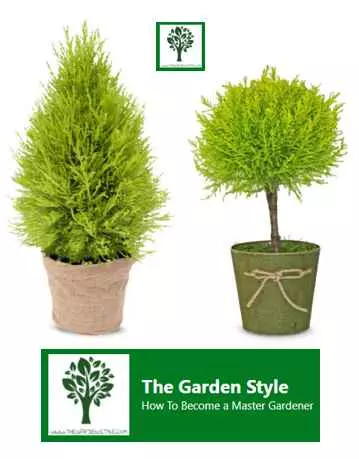
Lemon Cypress Tree Toxic to Cats or Dogs
Our readers recently ask “Are Lemon Cypress Trees Toxic to Cats or Dogs?” The Lemon Cypress tree is not considered edible. However, these trees are not even listed as emergency nutritional options in the Purdue University Famine Food Database and other sources.
Even if the California Poison Control Service did not list cypress as toxic to humans and animals, I would recommend not eating this tree until more scientific research is documented.
Does Lemon Cypress Repel Mosquitoes
Many people think that the Lemon Cypress tree repels mosquitoes or insects but this is not true. A good options to repel mosquitoes and insects from your garden are lemongrass and citronella plants.
Lemon Thread False Cypress: Fake Lemon Cypress
The Gold Mop False Cypress is a wonderful choice for your garden with a fabulous texture that will undoubtedly create a formidable ambiance in your garden landscaping.
Although many people confuse it with the Lemon Cypress tree. The gold mop cypress is also called a fake Lemon Cypress tree.
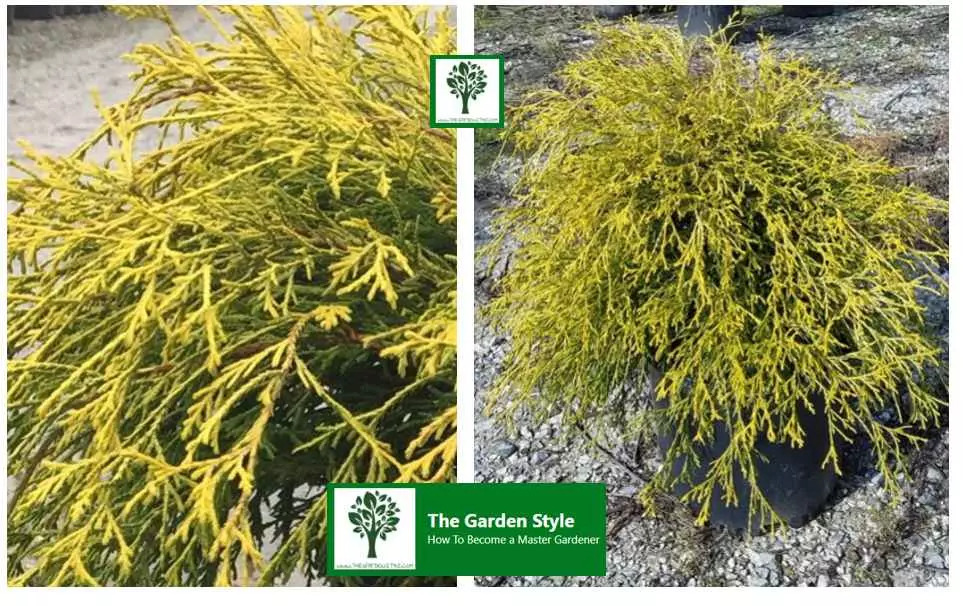
Gold Mop False Cypress is a classic choice, with unparalleled landscape texture! This evergreen plant produces bright golden yellow threaded leaves and is truly popular in the landscape. This dwarf is only 3-4 feet tall and 3-4 feet wide at maturity.
- Also known as Samara and Gold Mop, these evergreens have unique soft lemon lime colored needles and grow slowly to 5' in outdoor planters or gardens
- Lemon Thread tolerate pollution and cold to -20 making them ideal for landscapes and planters in city and urban settings on decks, porches, and patios
- Their unique colors and low maintenance make them great for accent plants, shrubs, borders, rock gardens, containers, and foundation plantings
The Gold Mop False Cypress has a hilly, cloud-like shape, which is very amazing in the landscape, especially in the rock garden.
It grows well in U.S. Department of Agriculture Zones 4-8 and requires full sunlight for best results. Plant in well-drained medium-quality garden soil. During the first growing season, water the newly planted plants 2-3 times a week.
These fake cypress trees are mature in a 3-gallon pot. They are approximately 12-18 inches tall and are distributed more widely when shipped. Flowering/Characteristics: linear leaves, slightly hanging golden yellow Evergreen or Deciduous: Evergreen. USDA area: 4-8
Uses of the Gold Mop False Cypress: accent, large-scale planting, shrub border, rock garden, winter interest, foundation
Exposure: plenty of sunlight. Water: low once established Soil type: well-drained garden soil
Fertilizer: every spring. Planting instructions: Watering before planting. Planting part of the sun for shade. Prepare the soil by digging a hole twice the size of the seedling to be planted.
We hope you have found our article about Lemon Cypress Tree Care and Propagation useful as well as the scientific input used for our gardening tips. Our staff of professional experts is looking forward to your comments and needs.
